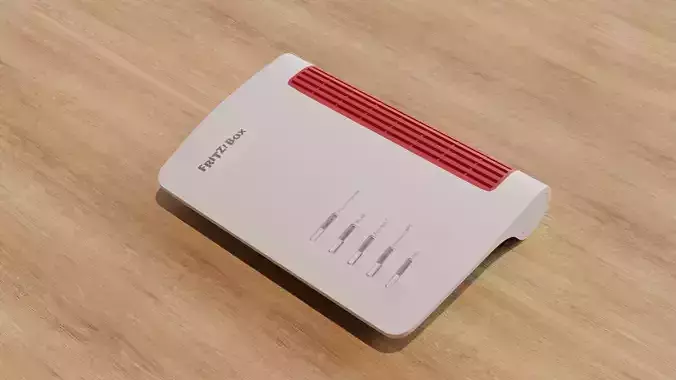
Modem FritzBox 4050 Low-poly 3D model
Modem Fritz!Box 4050low-poly, clean topology, 2K maps included
A modulator-demodulator, commonly referred to as a modem, is a computer hardware device that converts data from a digital format into a format suitable for an analog transmission medium such as telephone or radio. A modem transmits data by modulating one or more carrier wave signals to encode digital information, while the receiver demodulates the signal to recreate the original digital information. The goal is to produce a signal that can be transmitted easily and decoded reliably. Modems can be used with almost any means of transmitting analog signals, from LEDs to radio.
Early modems were devices that used audible sounds suitable for transmission over traditional telephone systems and leased lines. These generally operated at 110 or 300 bits per second (bit/s), and the connection between devices was normally manual, using an attached telephone handset. By the 1970s, higher speeds of 1,200 and 2,400 bit/s for asynchronous dial connections, 4,800 bit/s for synchronous leased line connections and 35 kbit/s for synchronous conditioned leased lines were available. By the 1980s, less expensive 1,200 and 2,400 bit/s dialup modems were being released, and modems working on radio and other systems were available. As device sophistication grew rapidly in the late 1990s, telephone-based modems quickly exhausted the available bandwidth, reaching 56 kbit/s.
The rise of public use of the internet during the late 1990s led to demands for much higher performance, leading to the move away from audio-based systems to entirely new encodings on cable television lines and short-range signals in subcarriers on telephone lines. The move to cellular telephones, especially in the late 1990s and the emergence of smartphones in the 2000s led to the development of ever-faster radio-based systems. Today, modems are ubiquitous and largely invisible, included in almost every mobile computing device in one form or another, and generally capable of speeds on the order of tens or hundreds of megabytes per second.
























